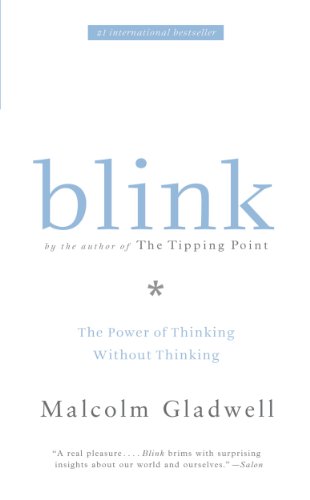

This article is an excerpt from the Shortform summary of "Blink" by Malcolm Gladwell. Shortform has the world's best summaries of books you should be reading.
Like this article? Sign up for a free trial here .
Why do we like what we like? How do we determine our own preferences? Are our judgments about our own likes and dislikes always accurate?
We’re good at making fast judgments about what we do and don’t like. But, surprisingly, sometimes these snap judgments about our own preferences can be inaccurate.
Here’s why your judgments about what you do and don’t like may not reflect your actual preferences.
The Psychology of Personal Preferences
Why do we like what we like? How are personal preferences formed?
Your preferences might seem fairly context-independent. If you prefer a particular type of chocolate, for example, you would still expect to prefer it if the packaging changed, or if you were asked to explain why you like it. In reality, however, it’s not that simple. Oftentimes, we don’t actually know what we like and don’t like. There are three reasons for this: 1) sensation transference, 2) unfamiliarity, and 3) lack of expertise.
Reason #1: Sensation Transference
Thin-slicing fails when our unconscious minds get distracted or misled by irrelevant information. This is what occurs in sensation transference. Sensation transference causes us to unconsciously judge a product, service, or person based on things that co-occur with the product but aren’t necessarily part of it (such as packaging or the environment in which it’s served). Marketing professionals often use sensation transference to get us interested in products.
One of the easiest ways marketers can prompt sensation transference is packaging. Changing things like the color of the food or its packaging, the weight of the packaging, or the location of the product image on the packet can influence our assessments of a particular product. We experience the packaging as part of the product, not independent of it. (Shortform note: The influences of packaging on our expectations about product flavor can be very specific. For example, rounded typefaces can lead us to expect sweet flavors, while sharper typefaces lead us to expect sour flavors.)
Reason #2: Unfamiliarity
As Gladwell notes, sometimes we like things just because they’re familiar and dislike things that are unfamiliar. We don’t like what we don’t know. Sometimes we taste, hear, or watch something different and the unconscious mind automatically registers it as bad.
Gladwell gives the example of television classics All in the Family and The Mary Tyler Moore Show, which almost didn’t make it to the air because the hundreds of viewers in market testing hated them. They thought that Family’s Archie Bunker was too abrasive and that career-woman Mary was a “loser.”
These sitcoms became two of the most successful in history. Were the opinions of initial viewers just different than those of the general public? Probably not. Viewers thought that they hated these shows, but really they were just shocked by them. Once they got used to them, they realized that they actually enjoyed them.
Thin-slicing fails when the unconscious mind has no previous experiences to which to compare the new experience.
Reason #3: Lack of Expertise
A third reason that Gladwell gives for the failure of thin-slicing judgments in the area of our personal preferences is a lack of relevant expertise. Experts aren’t fooled by a product’s packaging and they aren’t put off by unfamiliarity. Experts have the training to know what they like and the vocabulary to explain it.
Training
Experts learn how to match their unconscious feelings about a food or an object with a formal aspect of that food or object. This has a top-down effect on their first impressions.
Gladwell gives the following example: Professional food tasters spend decades developing the skills to judge foods objectively. They learn to match their sensation of a food being sweet or bitter to specific characteristics of that food. The more they practice, the better they become at identifying, for instance, not only how much citrus flavor a food contains, but how much of that citrus flavor is orange citrus, how much is lemon, and how much is grapefruit.
The more they practice, the better their ability to taste, and the more accurate their thin-slicing when confronted with a new food.
(Shortform note: This process suggests more of an interaction between deliberate processing and snap judgments than Gladwell allows for in the rest of the book. What Gladwell is describing here is a process of automatization—the repetition of a skill so that it requires less and less conscious attention and is eventually executed more or less unconsciously, freeing up the deliberative system for more difficult challenges. We all experience this gradual shifting of the line between effortful and unconscious processing when we try to master something complex, for example a new sport or language.)
Vocabulary
Experts also have a unique vocabulary that helps them refine their snap judgments. For example, as Gladwell notes, food tasters learn a specific way to describe what they like and don’t like.
They evaluate mayonnaise according to six dimensions of appearance (including color, lumpiness, and shine), 10 dimensions of texture (including firmness and density), and 14 dimensions of flavor, split into the subgroups of aroma (eggy), basic tastes (sour), and “chemical-feeling factors” (astringent).
Each of these 30 characteristics is rated on a 15-point scale. Food tasters use their rational minds to practice identifying and rating these characteristics. These experiences result in unconscious decisions that are well-aligned with the earlier conscious ones. Therefore, if a professional food taster likes mayonnaise, she can accurately tell you why. Using specialist vocabulary improves the chance that snap decisions will be made based on relevant, rather than irrelevant, details.
(Shortform note: Any field of expertise incorporates technical vocabulary that allows for finer distinctions, and therefore supports more precise communication, than lay speech. Part of becoming an expert in any given field is learning the vocabulary involved. Sometimes this involves “unlearning” word associations that we may have formed in more general contexts. For example, physics teachers can help their students to understand concepts by deliberately teaching them the physics-specific meaning of key technical words.)
Acting Like an Expert Can Set Us Up for Failure
Thin-slicing is more likely to fail when we lack expertise in a given area. Gladwell argues that it’s even more likely to fail when we act like experts without the requisite expertise. We pretend to be experts when we attempt to rationalize our snap-judgment preferences. This leads to even more confusion.
When we try to explain the unexplainable, we tune out our intuition in favor of the conscious mind, which (as we saw in Chapter 3) is often bluffing. It doesn’t know why it likes or dislikes something, but it doesn’t know that it doesn’t know, and it will make up anything to satisfy itself that it knows. It wants to be an expert on its preferences.
The problem is that we tend to adjust our judgments and actions to fit our rationalizations. Rationalizing can lead us further from understanding ourselves and what we like.
| How Should We Measure the Quality of Our Decisions? Not all decisions are created equal. A decision about which flavor of potato chips is your favorite, for example, has very different ramifications than a doctor’s decision about a patient’s diagnosis. For trivial decisions that relate to personal preference, such as choosing a poster for your wall, it makes sense to judge the decision based on people’s satisfaction with their choice after a period of time. When decision quality is measured this way, decisions based on unconscious thought come out ahead of those based on conscious deliberation. However, asking a doctor or patient whether they’re satisfied with a particular diagnostic or treatment decision isn’t the best way to measure decision quality in a medical context. More objective criteria, such as the progression of the patient’s illness, are needed. Getting the balance right between satisfaction and thoroughness can be tricky: As one 2011 study found, patients are less satisfied when a clinician communicates uncertainty in their decision (for example, if she says that there are several options for treatment and no clear best one). Clearly the solution here isn’t that doctors pretend more certainty than they feel. Instead, the authors recommend that doctors involve the patient in the decision, making it clear that some degree of uncertainty is normal. |
———End of Preview———

Like what you just read? Read the rest of the world's best summary of "Blink" at Shortform . Learn the book's critical concepts in 20 minutes or less .
Here's what you'll find in our full Blink summary :
- How you can tell if a marriage will fail, within 3 minutes
- Why your first impressions are usually surprisingly accurate
- The dark side to making first impressions, and how to avoid the,






